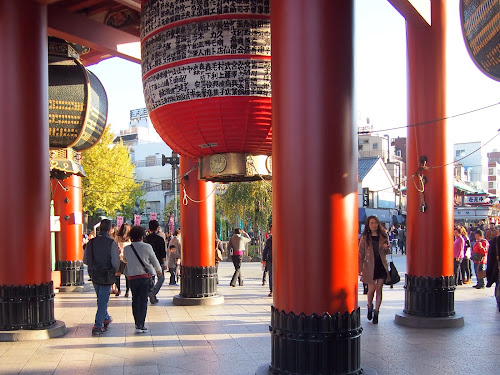Within twenty years of the discovery of the statue of the Boddhivista Kannon in the Sumida River, a Buddhist priest established a temple to shield it from human eyes in 645 (Tokyo’s oldest). This was the foundation of Asakusa as an important village. When the Tokugawa clan moved the capital to Tokyo at the beginning of the Edo period, Sensoji temple was where prayers for the success of their shogunate were offered. Today it draws tremendous crowds. The crowds are overwhelmingly Japanese tourists. We caught ourselves staring at other Westerners, just like everyone else.
Countless shops crowd the neighborhood (which could be said of most neighborhoods in Japan). A mobile hot spot helped us to navigate, but meager language skills made finding a meal our biggest challenge. In Asakusa, we ate at a little restaurant by pointing at pictures posted outside the door.
There are many statues of Japanese raccoon dogs, or tanuki, like these in Asakusa near the Sensoji temple. To us, they are somewhere between cute and weird! These particular Tanuki were put here at Shingodo Shrine as an appeal to Shingodo, the raccoon dog guardian against theft and fire when there were some theft issues around the temple.
You have to hand it to those Japanese marketers at KFC. They’ve convinced a lot of people that Americans eat fried chicken for Christmas. So, KFC stores sport signs saying how many boxes of chicken remain to be reserved for Christmas (so, hurry up and place your order!).












